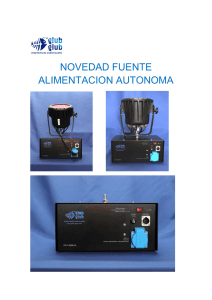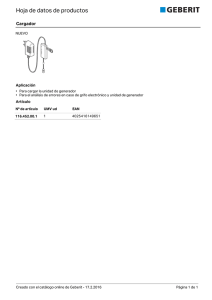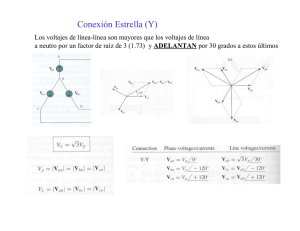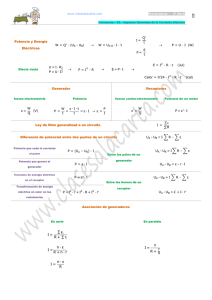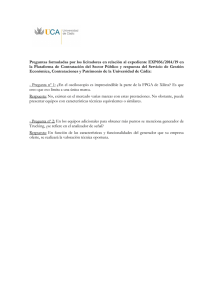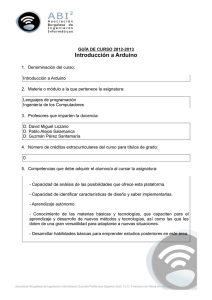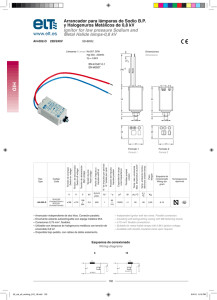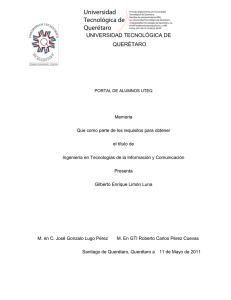Buenadicha Avilés, Rafael - IIT - Universidad Pontificia Comillas
Anuncio
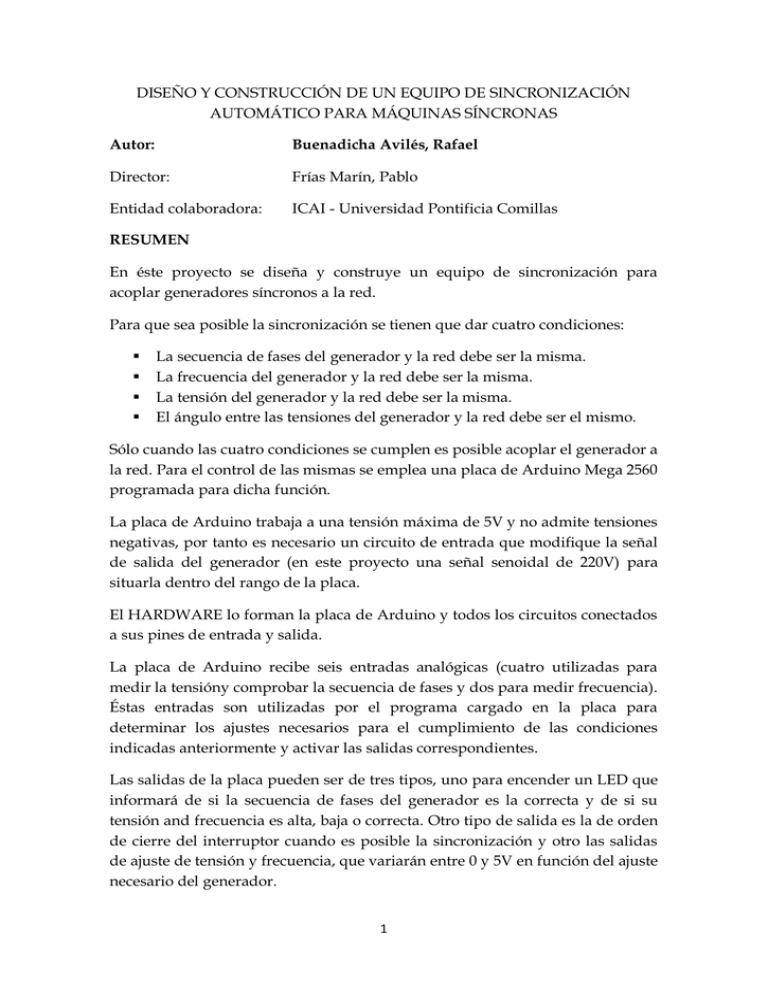
DISEÑO Y CONSTRUCCIÓN DE UN EQUIPO DE SINCRONIZACIÓN AUTOMÁTICO PARA MÁQUINAS SÍNCRONAS Autor: Buenadicha Avilés, Rafael Director: Frías Marín, Pablo Entidad colaboradora: ICAI - Universidad Pontificia Comillas RESUMEN En éste proyecto se diseña y construye un equipo de sincronización para acoplar generadores síncronos a la red. Para que sea posible la sincronización se tienen que dar cuatro condiciones: La secuencia de fases del generador y la red debe ser la misma. La frecuencia del generador y la red debe ser la misma. La tensión del generador y la red debe ser la misma. El ángulo entre las tensiones del generador y la red debe ser el mismo. Sólo cuando las cuatro condiciones se cumplen es posible acoplar el generador a la red. Para el control de las mismas se emplea una placa de Arduino Mega 2560 programada para dicha función. La placa de Arduino trabaja a una tensión máxima de 5V y no admite tensiones negativas, por tanto es necesario un circuito de entrada que modifique la señal de salida del generador (en este proyecto una señal senoidal de 220V) para situarla dentro del rango de la placa. El HARDWARE lo forman la placa de Arduino y todos los circuitos conectados a sus pines de entrada y salida. La placa de Arduino recibe seis entradas analógicas (cuatro utilizadas para medir la tensióny comprobar la secuencia de fases y dos para medir frecuencia). Éstas entradas son utilizadas por el programa cargado en la placa para determinar los ajustes necesarios para el cumplimiento de las condiciones indicadas anteriormente y activar las salidas correspondientes. Las salidas de la placa pueden ser de tres tipos, uno para encender un LED que informará de si la secuencia de fases del generador es la correcta y de si su tensión and frecuencia es alta, baja o correcta. Otro tipo de salida es la de orden de cierre del interruptor cuando es posible la sincronización y otro las salidas de ajuste de tensión y frecuencia, que variarán entre 0 y 5V en función del ajuste necesario del generador. 1 El interruptor de cierre es un relé trifásico que acopla el generador a la red cuando su bobina es excitada. El funcionamiento del SOFTWARE se resume en el siguiente diagrama de bloques: El programa comprueba en todo instante que la secuencia de fases es correcta y mide la frecuencia y tensión del generador. Tal como se observa en el diagrama de bloques, el programa no pasa a la siguiente fase si la anterior no se ha completado, es decir, primero comprueba que la secuencia de fases es correcta, si lo es, pasa al ajuste de la frecuencia y luego al de la tensión. En caso de que alguna fase no se completara, el programa vuelve a empezar desde la primera fase. El programa está diseñado con unos parámetros de entrada de las características de la máquina a sincronizar, por tanto, el equipo se puede utilizar para sincronizar cualquier máquina simplemente cambiando estos parámetros. El funcionamiento del equipo está comprobado con una máquina síncrona de laboratorio con una tensión nominal de 220V. Los RESULTADOS obtenidos en el ensayo fueron satisfactorios, comparando el equipo de sincronización construido con otro de otro fabricante, consiguiendo 2 la misma precisión que el mismo y a un precio mucho más reducido. El equipo de sincronización diseñado resultó acoplar la máquina a la red de manera adecuada, por tanto se consiguen los objetivos marcados en el presente proyecto. 3 DESIGN AND CONSTRUCTION OF AN AUTOMATIC SYNCHRONIZING EQUIPMENT FOR ELECTRIC MACHINES ABSTRACT In this project, a generator synchronizing equipment is designed and built. To make the synchronization possible, four conditions must be fulfilled: The generator phase sequence must be the same as the network one. The generator and network frequency must be the same. The generator and network voltage must be the same. The angle between generator and network voltages must be the same. The synchronization is possible only if all of them are fulfilled. To control these conditions, an Arduino Mega 2560 microcontroller board is used and previously programmed for it. The Arduino board works with a maximum voltage of 5V and negative voltages are not allowed, so, an input circuit is necessary to modify the generator output signal to get it in the range voltage that the Arduino board requires. The HARDWARE is made up of the Arduino board and all the circuits connected to its input and output pins. The board receives six analog inputs (four used for measuring voltage and checking the phase sequence and two for measuring frequency). This inputs are used by the program for deciding the necessary settings to fulfill the conditions mentioned previously and activating the appropriate outputs. The board outputs can be of three types, one type to light a LED that will warn if the generator phase sequence is correct and if its frequency and voltage is high, low or correct. Another kind of output is the closure order of the relay when the synchronization is possible and the other one is the outputs of setting voltage and frequency, these outputs will vary between 0 and 5V depending on the necessary generator setting. The shutdown switch is a three phase relay that connects the machine to the network when its coil is energized. 4 The SOFTWARE operation is shown in the following block diagram: The program checks every moment that the phase sequence is the correct one and measures the frequency and voltage of the generator. As its shown in the block diagram, the program does not continue to the next phase if the previous one is not full completed, so, the program checks if the phase sequence is correct, and if it is, it continues to the next phase measuring and setting the frequency and after this one, the voltage. If some phase will not be full completed, the program start at the first phase again The program is designed with some input parameters about the synchronous generator properties, so the equipment can synchronize every generator changing this parameters. The equipment operation is checked with a synchronous generator of laboratory with a nominal voltage of 220V. The RESULTS in the test were satisfactory, comparing the built synchronization equipment with another one of another manufacturer, reaching the same precision and a lower price. The designed synchronizing equipment coupled the machine to the network in an appropriate way, so the wanted goals are reached in the present project. 5
